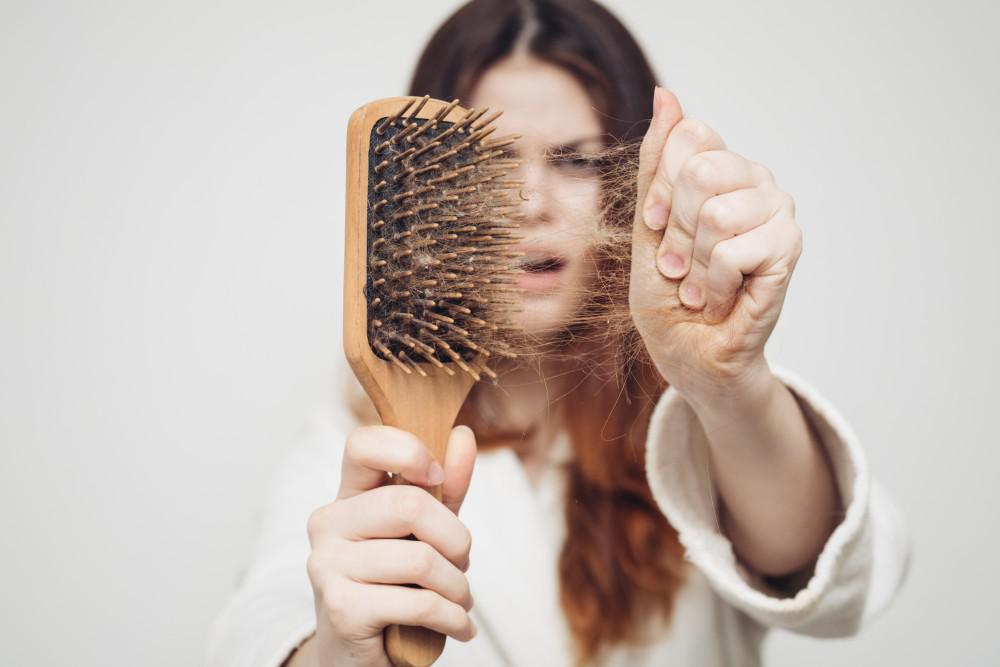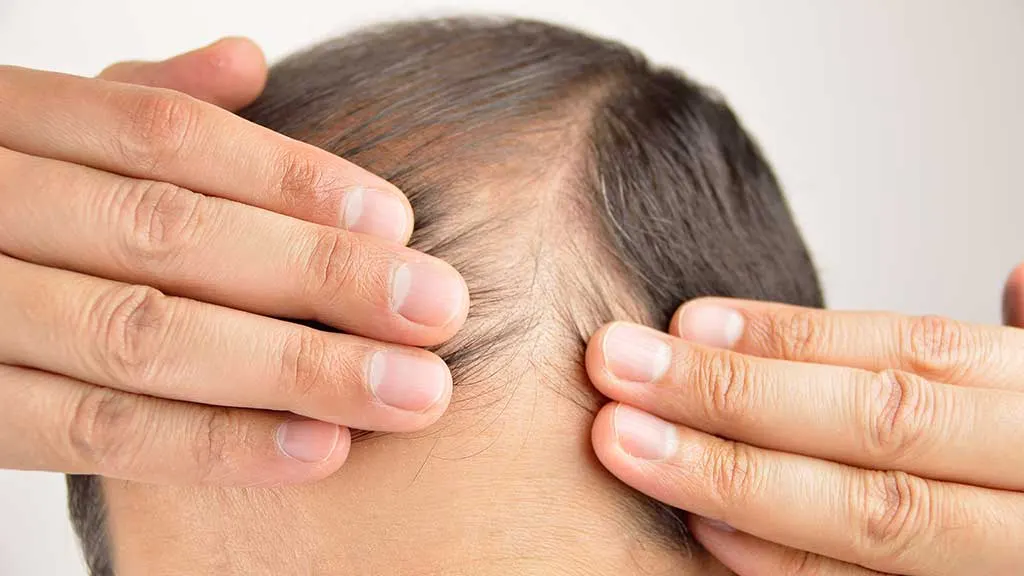Diabetes has far-reaching effects on the body and is often linked to serious health complications. However, one of its lesser-known symptoms is hair loss. Does diabetes cause hair loss? The answer is yes.
While diabetes is commonly associated with high blood sugar and complications like neuropathy or heart disease, it can also lead to hair thinning and hair loss. Diabetes affects weight changes, circulation, hormone levels, and overall hair health, disrupting the growth cycle and causing noticeable changes. From Type 1 to Type 2 diabetes, even prediabetes, these conditions can disrupt hair growth cycles.
This article explores the connection between diabetes and hair loss, detailing the underlying mechanisms, what diabetes-related hair loss looks like, and effective treatments. You’ll also learn practical tips on how to stop hair loss from diabetes and improve your overall hair health.
Does Diabetes Cause Hair Loss?
Diabetes can directly and indirectly lead to hair loss. High blood sugar damages blood vessels, reducing oxygen and nutrient flow to hair follicles. This impairs follicle health and slows down hair growth, leading to thinning or even bald patches. Additionally, insulin resistance—common in Type 2 diabetes and prediabetes—can disrupt hormonal balance, further affecting hair growth.
Hair loss in diabetes isn’t limited to the scalp. Many people notice hair loss on their legs or other body areas, as a result of poor circulation in extremities. For those with Type 1 diabetes, autoimmune conditions like alopecia areata can trigger patchy hair loss. Hormonal imbalances caused by diabetes also increase the risk of female hair loss and insulin resistance, which can cause diffuse thinning on the scalp.
If you’re wondering, “Will hair loss from diabetes grow back?”, the answer depends on your overall health, how well your diabetes is managed, and the extent of follicle damage.

Mechanisms of Hair Loss in Diabetes
Poor Circulation
High blood sugar damages small blood vessels, reducing blood flow to hair follicles. Without sufficient nutrients and oxygen, follicles weaken, shrink, or stop producing hair altogether. This is also why some individuals experience hair loss on their legs.
Hormonal Imbalances
Diabetes disrupts hormone levels, particularly in women. These imbalances can result in female hair loss or changes in hair texture. Individuals with female diabetes hair loss often notice diffuse thinning, especially if they also have insulin resistance.
Autoimmune Conditions
In Type 1 diabetes, the immune system may mistakenly attack hair follicles, a condition known as alopecia areata. This leads to patchy bald spots on the scalp or body, with regrowth sometimes being slow or incomplete.
Medication Side Effects
Some diabetes medications may contribute to hair thinning. While rare, drugs like metformin, Jardiance, and Trulicity list hair loss as a possible side effect. If you suspect your medication is causing hair loss, consult your doctor for alternatives.
Signs and Symptoms of Diabetes-Related Hair Loss
What does diabetes hair loss look like? It often manifests as diffuse thinning across the scalp or patchy hair loss due to autoimmune conditions. Some individuals notice slower regrowth, particularly after hair shedding. Besides, type 2 diabetes is also known to cause central scalp alopecia.
In women, female hair loss and diabetes often appear as overall thinning, while in men, it can accelerate male-pattern baldness. Additionally, poor circulation caused by diabetes may result in hair loss on the legs or other areas of the body.
Identifying diabetes-related hair loss involves examining symptoms like fatigue, weight changes, or difficulty healing wounds. If uncertain, a doctor can recommend blood tests for hair loss, such as HbA1c or hormonal panels, to pinpoint the cause.

Treatment and Management
Medical Treatments
- Blood Sugar Control: Managing blood glucose levels improves circulation and reduces inflammation, helping hair follicles recover.
- Topical Treatments: Minoxidil (Rogaine) is a widely used topical treatment to promote hair regrowth.
- Medication Adjustments: If drugs like metformin, Jardiance, or Trulicity are contributing to hair loss, consult your doctor about alternatives.
Lifestyle Changes
- Balanced Diet: Include hair-friendly nutrients like biotin, zinc, and omega-3 fatty acids. Foods like salmon, eggs, nuts, and spinach support healthy hair.
- Exercise: Regular physical activity enhances circulation, improving nutrient delivery to hair follicles.
Stress and Scalp Care
- Stress exacerbates hair loss. Practices like meditation, yoga, or breathing exercises can help.
- Use gentle shampoos and avoid harsh chemicals or heat treatments that can damage hair further.
Hormone Management
For women with female diabetes hair loss, balancing hormones through proper medical care may slow or reverse hair loss.
Prevention Tips
If you’re wondering how to stop hair loss from diabetes, the key lies in prevention:
Control Blood Sugar:
Stabilize glucose levels to protect hair follicles from damage.
Eat a Healthy Diet:
Include foods rich in vitamins and minerals like biotin, iron, and omega-3s to maintain hair health.
Avoid Harsh Hair Treatments:
Minimize heat styling and tight hairstyles that could worsen hair damage.
Monitor for Changes:
Address prediabetes hair loss or changes in texture early to prevent further damage.
By combining these strategies, you can proactively protect your hair.
When to See a Doctor
Consult a doctor if:
- Hair loss is sudden, excessive, or accompanied by bald patches.
- Hair changes are coupled with other symptoms like fatigue or weight changes.
- You’re concerned about medication side effects, such as Jardiance side effects hair loss or metformin-related hair thinning.
A healthcare provider may recommend blood tests, such as HbA1c, thyroid function tests, or iron levels, to determine the underlying cause. Dermatologists can also provide tailored treatment plans for hair regrowth.
Conclusion
While diabetes-related hair loss can be challenging, it is often manageable with the right approach. Controlling blood sugar levels, addressing potential medication side effects, and adopting a healthy lifestyle can significantly improve hair health.
If you’re experiencing persistent hair loss, consult a healthcare provider to determine the best course of action. With proper care and timely intervention, many people see improvements in their hair over time.
FAQs
Will hair loss from diabetes grow back?
In many cases, hair regrowth is possible with improved blood sugar control and proper treatment.
Can diabetes change hair texture?
Yes, diabetes can make hair thinner, more brittle, or even curly due to hormonal and circulatory changes.
Does metformin cause hair thinning?
Hair thinning from metformin is rare but possible. Discuss concerns with your doctor.
Can you reverse hair loss?
Some forms of diabetes-related hair loss can be reversed with consistent management of blood sugar and a healthy lifestyle.




